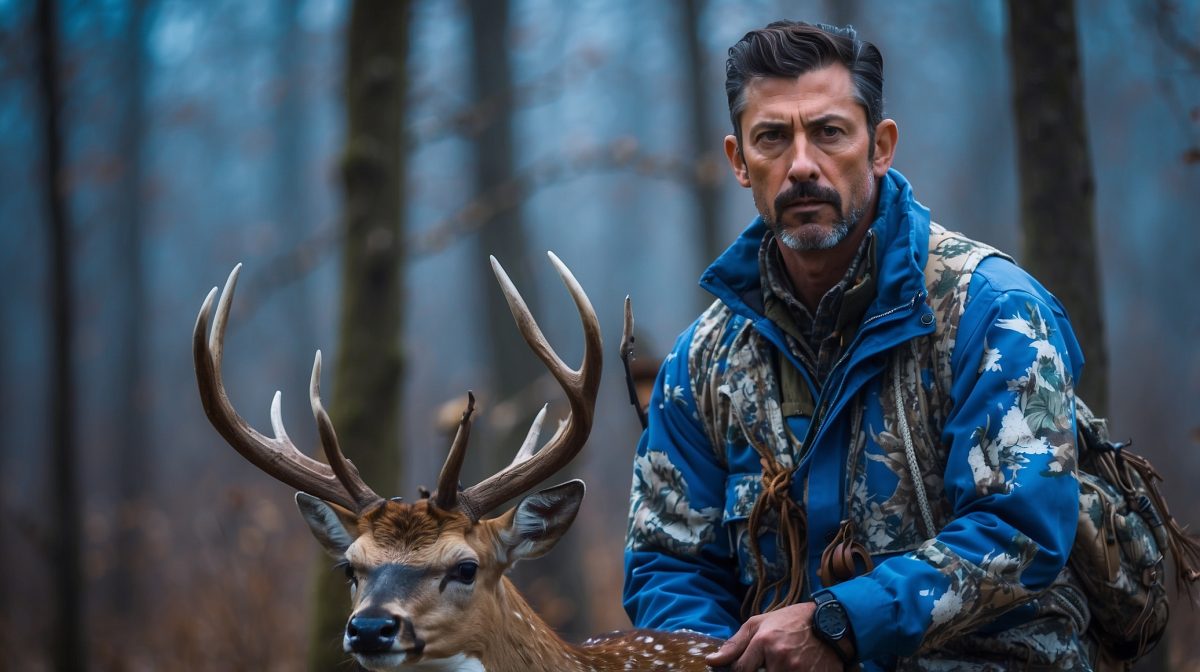Understanding Axis Deer and Their Habitat
Axis deer, with their distinctive reddish coats and white spots, are a sight to behold in the wilds of Texas Hill Country. These critters are different from your average whitetail, sporting impressive antlers that can make any hunter’s heart race. They’re not just pretty, though; they’re smart and have a keen sense of their surroundings, which makes understandin’ their behavior crucial to your huntin’ success.
As the seasons change, so do the movement patterns of Axis deer. They’re creatures of habit, stickin’ to areas where food and water are plentiful. But don’t think that makes them easy to find. These deer know their home turf like the back of their hoof, and they use the dense cedar thickets and rugged terrain of the Texas Hill Country to their advantage, makin’ a hunter’s job all the more challengin’.
Preparing for the Hunt
Before you set foot on the huntin’ grounds, make sure you’re geared up right. From a trusty rifle to a pair of sturdy boots, every item on your gear checklist serves a purpose. You’ll want to blend in with the environment, so choose camouflage that matches the local flora. And don’t forget about scent control; these Axis deer can sniff out an intruder from a mile away, so you best cover up your human scent as much as possible.
Spot and stalk huntin’ ain’t no walk in the park; it’s a physically demandin’ sport. You’ll be traversin’ tough terrain and need to be quick on your feet when the moment of truth arrives. So, keep yourself in top shape. A hunter who’s huffin’ and puffin’ is more likely to spook their quarry than to bag it. Stay fit, stay quiet, and you’ll increase your chances of success.
Locating Axis Deer
Spotting an Axis deer from a distance is an art form in itself. You’ll need to train your eyes to pick up on the slightest movements and the faintest outlines. A good pair of binoculars or a spotting scope can be your best friend out there, helpin’ you to survey the land and pick out your target without gettin’ too close too soon. Remember, patience is key; take your time, and keep your optics handy.
But it’s not just about what you see; it’s also about what you find on the ground. Learnin’ to read signs and tracks can tell you a whole lot about where the deer are headin’ and where you might find ’em next. Look for fresh droppings, rubbings on trees, and tracks that lead to waterin’ holes. These clues can lead you right to your prize if you know what you’re lookin’ for.
The Art of the Stalk
Now, when it comes to the stalk, that’s where the real skill comes in. You’ve spotted your Axis deer, and it’s time to close the distance without givin’ yourself away. Plan your approach carefully, usin’ the natural contours of the land to stay out of sight. Move slow, stay low, and keep downwind of your target. This ain’t no race; it’s a tactical maneuver that requires all your focus and finesse.
The Texas Hill Country is full of natural cover, from the mesquite thickets to the limestone outcroppings. Use every feature to your advantage, and remember that sometimes the best approach is the one that takes a little longer. Your patience will pay off when you find yourself within range for a clean shot, with the deer none the wiser. It’s all about timing and patience, my friends.
Making the Shot
Once you’ve stalked within shootin’ distance, it’s time to focus on makin’ a clean and ethical shot. Find yourself a clear shootin’ lane where there’s no risk of a stray bullet causin’ harm. Take a deep breath, steady your aim, and remember your shot placement. A well-placed shot ensures a quick and humane harvest, respectin’ the animal and the sport.
But the hunt ain’t over with the pull of a trigger. Know what to do after the shot. Follow up quickly and responsibly to ensure the animal is dispatched with as little sufferin’ as possible. This is where your respect for the creature and the ethics of huntin’ really show through. It’s a moment of truth that defines you as a hunter.
Axis Deer Hunting Tips and Tricks
The best times for spot and stalk huntin’ are usually early in the mornin’ or late in the evenin’, when the Axis deer are most active. Keep an eye on the sky, too, ’cause weather can play a big part in your strategy. A light breeze can carry your scent away from your prey, but a strong wind might just cover up the sound of your approach.
Avoid common mistakes like movin’ too fast, ignorin’ the wind, or neglectin’ to prepare properly. Each misstep can ruin a day’s hunt. But with the right knowledge and a bit of practice, you’ll find yourself gettin’ better and better at outsmartin’ these wily creatures.
Conclusion
Well, folks, that’s about all there is to it. Spot and stalk huntin’ for Axis deer in the Texas Hill Country is a fine art that combines skill, patience, and respect for these noble creatures. Remember, it’s not just about the hunt; it’s about immersin’ yourself in the great outdoors and appreciatin’ the natural beauty of our beloved Texas. So take these tips, head on out to the field, and happy huntin’!
FAQs
What’s the best time of year to hunt Axis deer in the Texas Hill Country?
The best time of year for Axis deer huntin’ is late spring through early fall, when the bucks are in full antler and the vegetation offers good cover for stalkin’.
How can I tell the difference between Axis deer and native white-tailed deer?
Axis deer have a reddish coat with white spots and long, lyre-shaped antlers, while white-tailed deer are generally more grayish-brown with smaller, basket-shaped antlers.
What’s the average range I should be prepared to shoot from when spot and stalk hunting?
Be prepared for shots anywhere from 100 to 300 yards, dependin’ on the terrain and your skill level with a rifle.
Is it necessary to use a guide for Axis deer hunting at JL Bar Ranch Resort?
While it’s not strictly necessary, a guide can greatly enhance your huntin’ experience, especially if you’re unfamiliar with the land and habits of Axis deer.
How do I ensure that I’m hunting Axis deer ethically and responsibly?
Practice good shot placement, follow local huntin’ regulations, and respect the animal by makin’ a quick, clean harvest.


